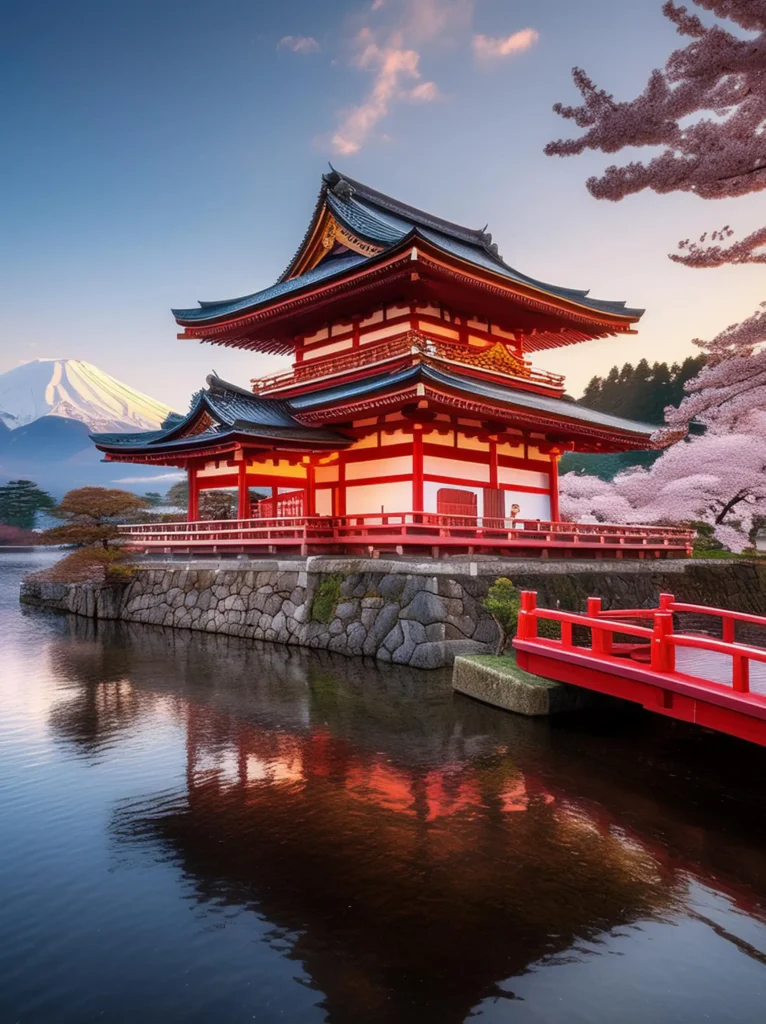Striving to Maintain Balance Between Tradition and Modernity
Japan’s
Evolving Views Towards Tourism
Impact of the Pandemic on Japan’s Tourism
Temples, manga, sushi, and breathtaking scenery these are a few wonders that Japan is known for. A destination of curiosity for travelers across the world, Japan has seen a post-pandemic surge in tourists. During the pandemic, Japan implemented extremely tight border controls and strict guidelines, bringing tourism to a halt. However, things have drastically changed. Last year the country welcomed over 25 million visitors, a 558% increase compared to 3.8 million visitors in 2022.
According to a report by the Japan National Tourism Organisation (JNTO), in March 2024, the country broke records, welcoming 3.08 million visitors, surpassing the monthly influx number for the first time since 1964. Whilst these numbers are boosting Japan’s economy, locals are battling with over-tourism and the chaos it is bringing to prime locations such as Mount Fuji and Kyoto. So, what is Japan doing to find the perfect balance?
The Timeless Charm of Kyoto
Once the capital of Japan, Kyoto is famous for its tranquil temples, historic tea houses, and iconic geishas. The city exudes tradition; walking down the street, you see shrines and feel the ancient history in the atmosphere. Amongst the small streets are the private alleys of the Gion district, where geishas, the female entertainers, live.
Seen as the perfect blend of tradition and modernity and with easy access from Tokyo and Osaka, Kyoto has historically attracted tourists for centuries. However, this popularity is taking a wrong turn, and the city is now facing issues of over-tourism.
With a population of around 1.5 million, Kyoto welcomed over 32 million tourists in 2023. This surge in tourism has left locals disgruntled as they face issues with waste management, crowded public transport, and busy streets. Not only have locals seen a decline in their quality of life, but the city has also found its cultural heritage being attacked.
Around the Gion district, there are numerous signs asking for the safety and comfort of geishas to be considered. Unfortunately, tourists regularly ignore these pleas. This has led to the city’s tourist ban in the private alleys of Gion to curb misbehavior.
Kyoto is not the only Japanese city facing issues with tourist etiquette. The town of Kawaguchiko, renowned for its stunning views of Mt. Fuji, is another hotspot. Mt. Fuji, the tallest peak in Japan, is a bucket list destination for travelers.
The mountain becomes a prominent attraction during peak months when visibility is at its best. Kawaguchiko has long been a hub for visitors seeking vistas of this natural masterpiece. One particular spot in town has gained iconic status among tourists for capturing the perfect Mt. Fuji picture. The view of the mountain from a local Lawson’s convenience store has become a viral sensation amongst Instagram and TikTok users. However, the rise in popularity has brought numerous challenges.


Encouraging Exploration of Lesser-Known Regions
The breathtaking view has led to significant traffic congestion and an influx of people, resulting in littering and disturbances to the local community. To tackle these problems, local authorities have blocked the view with a large mesh screen to obstruct the view and discourage tourists from gathering. Despite these efforts to curb over-tourism, Japan isn’t finished with tourists. Instead, they are encouraging travelers to explore other regions off the beaten track. They have since promoted 11 ‘model destinations’ to dissuade people from visiting the packed destinations of Tokyo and Kyoto. Mount Fuji is not the only natural masterpiece in Japan.
Mount Hachimantai, Japan’s third-highest mountain, can be found in the northern region. The mountain combines scenic landscapes with a network of walking trails. To the north of Kyoto, you can find Kanazawa, a traditional town boasting much of what Kyoto has to offer but with fewer crowds. Kanazawa’s highlights include the historic geisha district, Higashi Chaya, and Nagamachi samurai district. Tradition exudes within the city and offers a culturally immersive stay.
As Japan continues to welcome tourists from around the world, it is clear the country is taking steps to manage the influx whilst preserving its culture and natural treasures. By promoting lesser-known destinations and implementing measures to protect popular sites, Japan aims to create a sustainable tourism model that benefits locals and visitors.
With its rich history, stunning landscapes, and vibrant culture, Japan remains a top destination for curious and respectful travelers. By embracing sustainable tourism practices, we can ensure that its wonders are preserved for generations to come. So, why not embark on an unforgettable journey through the Land of the Rising Sun – there’s so much more to explore beyond the bustling streets of Tokyo and Kyoto?


